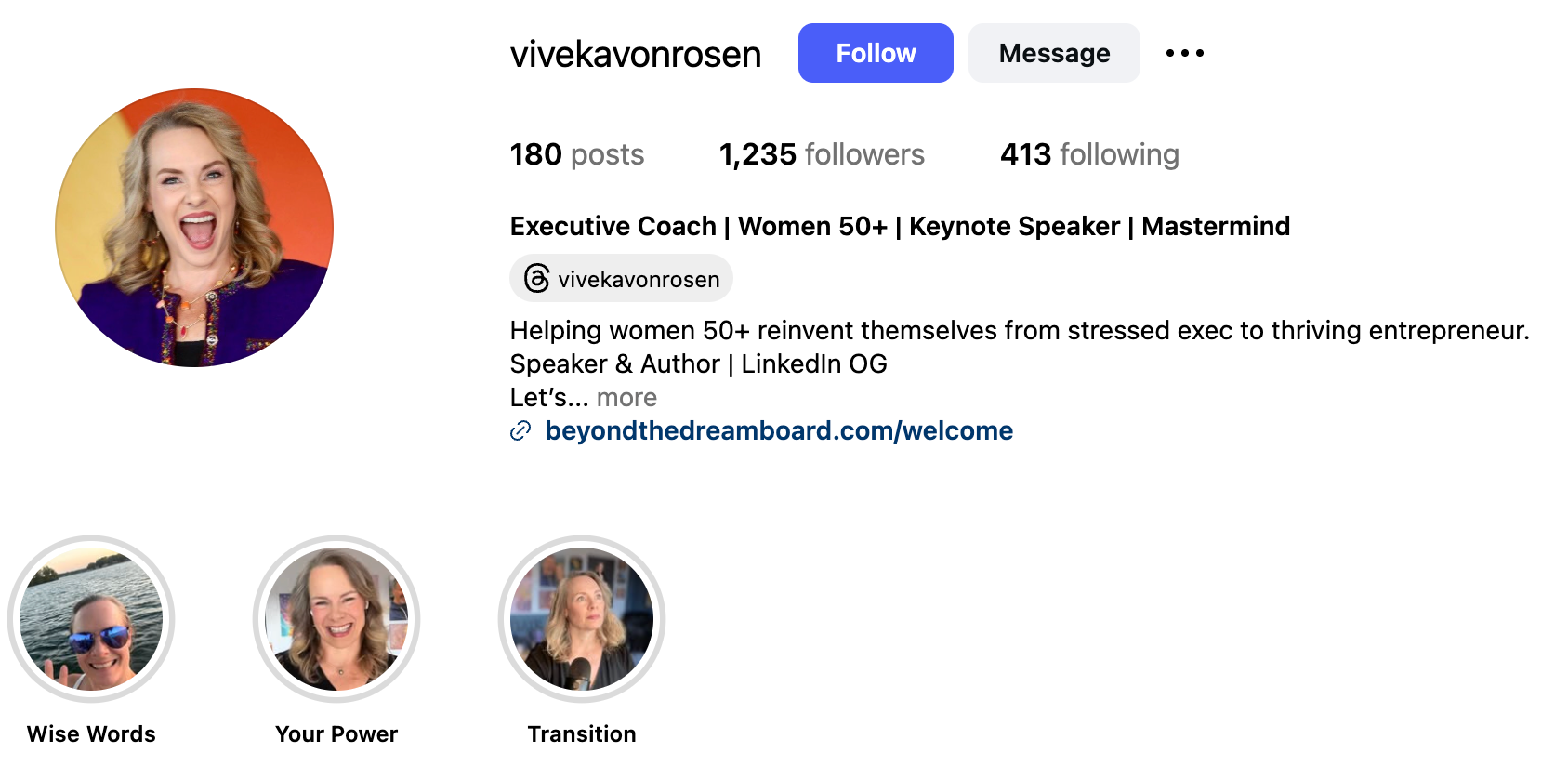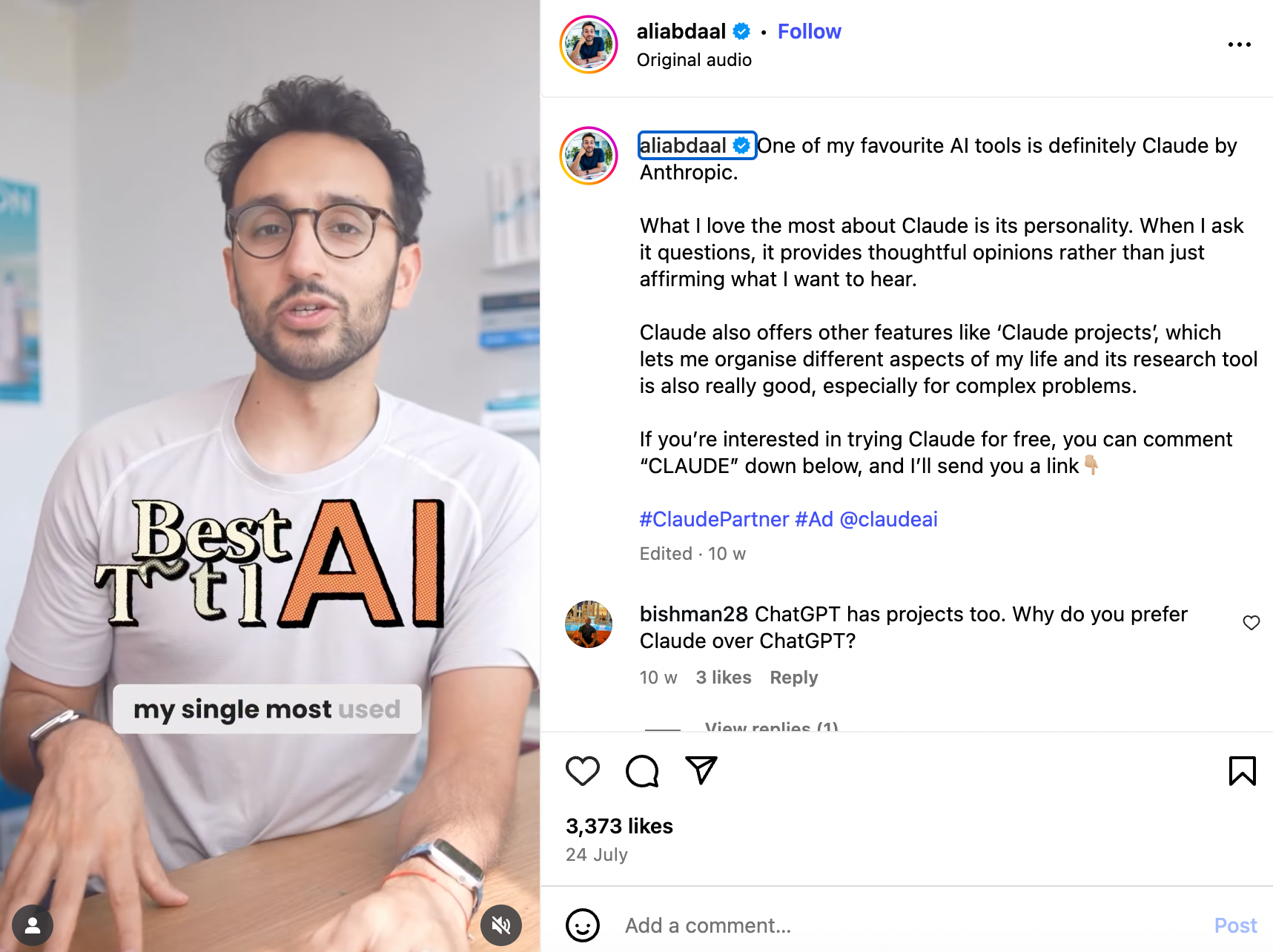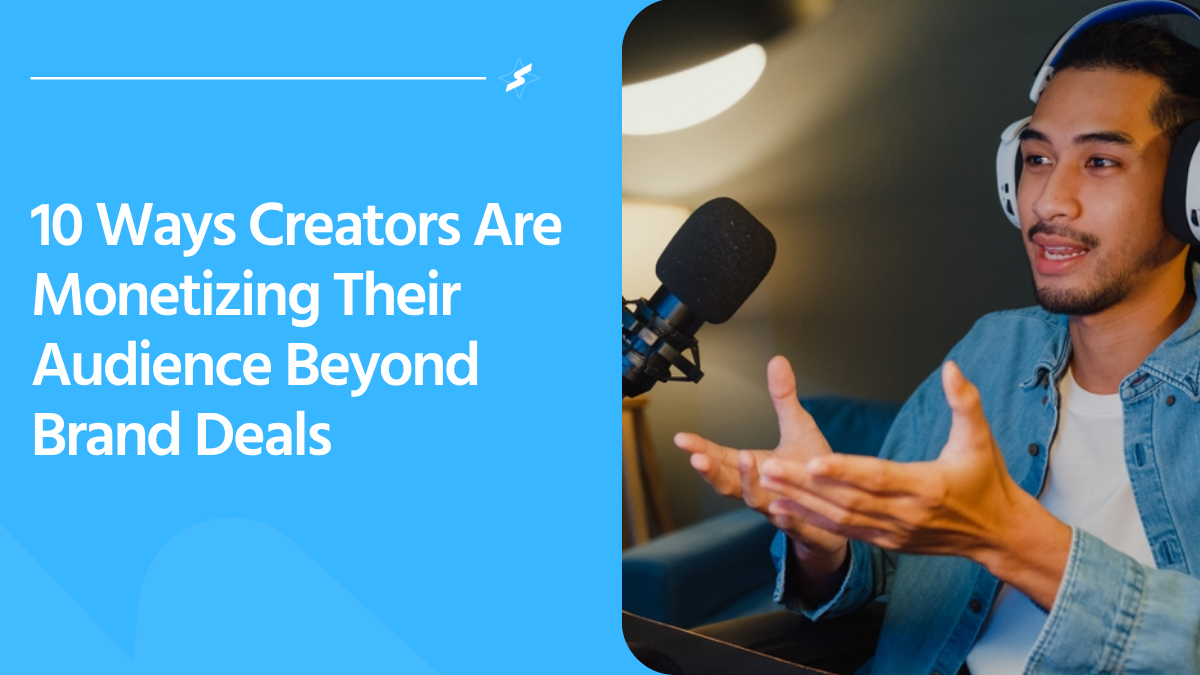Brand collaborations once defined creator success — the more sponsorships you landed, the more “legit” you seemed. But in 2025, creators are rewriting that rulebook. Today’s most successful influencers don’t rely on brands to pay their bills; they build businesses around their audience.
The modern creator isn’t just a content machine — they’re educators, founders, and community builders. From selling digital products to launching paid newsletters or automated DMs that sell 24/7, creators now have more control over how they monetize their influence than ever before.
This shift isn’t about abandoning brand deals — it’s about diversifying income and building sustainability. When you own your revenue streams, you own your freedom — to create, experiment, and grow without waiting for the next brand brief.
In this guide, we’ll break down 10 proven, profitable ways creators are turning followers into paying supporters — no sponsorship required.
Selling Digital Products (Guides, Templates, Ebooks)
One of the easiest and most scalable ways to monetize your audience is by selling what you already know. Digital products — whether it’s a Notion planner, Instagram caption bank, Lightroom preset, or strategy guide — let creators turn expertise into passive income.
Unlike brand deals that depend on approvals or timelines, digital products give you full control. You build once and sell forever. The best part? Your audience already trusts your insights — so when you package your knowledge into something useful, conversions follow naturally.
Start small: test a single product that solves a problem your followers often ask about. Then expand into bundles, advanced versions, or recurring offers.
Platforms like SuperProfile, Gumroad, or Payhip make setup effortless — no website or tech skills required.

💡 Pro tip: Pair your product with an AutoDM flow — “Comment ‘Guide’ to get my planner” — and watch engagement instantly turn into revenue.
Suggested read: How to Become an Instagram Influencer in 2025: Complete Guide
Paid Communities and Memberships
Creators are no longer just building audiences — they’re building ecosystems.
A paid community transforms your followers from passive consumers into active participants who value access, connection, and exclusivity.
Whether it’s a private Discord group, a Telegram channel, or a members-only Instagram broadcast, communities give creators recurring income and stronger relationships. The appeal isn’t the platform — it’s the closeness: direct conversations, early drops, personalized feedback, or mentorship sessions that fans can’t get anywhere else.
Start by offering simple perks like Q&A sessions, templates, or behind-the-scenes access. Once engagement builds, you can layer in higher-tier offers — such as coaching calls, exclusive tools, or digital meetups.
Platforms like SuperProfile (for gated content), Circle, or Patreon make it easy to manage subscriptions and content access, while automation tools handle renewals and onboarding.
💡 Pro tip: Use your SuperProfile link in bio to showcase membership tiers directly on your Instagram — and automate welcome DMs when someone joins.
Example: Kim Haberley / @iambohoblonde
Kim Haberley, founder of Boho Blonde, uses Instagram’s Subscriptions feature to run a paid community of around 3,100 subscribers, earning around $20,000/month from exclusive educational content. Her strategy includes responding to DMs and comments from subscribers first, giving them insider access and prioritizing two-way engagement.

She offers:
- Subscriber-only Reels, Stories & Lives
- Broadcast channels and chats
- Deeper dives into hairstyling education and tutorials
- Early access, behind-the-scenes, and more engagement than non-subscribers get
Launching Online Courses or Workshops
If you’re already teaching through Reels, carousels, or tutorials, you’ve got the foundation for a profitable course.
Online courses and workshops let creators package their skills into structured learning experiences — from short masterclasses to full-scale programs.
The beauty of this model is scalability: record once, sell forever. Whether you teach personal branding, editing, cooking, or freelancing, your audience is already primed to learn from you.
Start simple — a 60-minute live workshop or a 3-part mini course hosted on SuperProfile, Kajabi, or Teachable. Offer exclusive materials (like templates or workbooks) to boost perceived value. Then, use snippets from your course — short clips or testimonials — as Instagram content to drive signups.
And if you pair it with AutoDM flows (“Comment Course to get early access”), you can automate discovery, enrollment, and payments all in one funnel.
💡 Pro tip: Focus your first course on solving one high-demand problem your audience struggles with — clarity sells better than complexity.

Example: Preeti Pooja’s Video Creator Course is a 3-week live workshop that helps creators master engaging short-form videos (planning, filming, editing). She promotes it via Instagram snippets, shares students’ results, and later converts it into a self-paced format.
Offering 1:1 Consulting or Services
When your audience trusts your expertise, they’re not just following for inspiration — they’re looking for guidance.
That’s where 1:1 consulting or service-based offerings come in. It’s one of the fastest ways creators turn influence into direct income, especially for those in strategy-driven niches like marketing, fitness, design, or career growth.
Instead of waiting for brands, creators are now offering bio audits, content strategy sessions, or coaching calls — giving followers tailored feedback and real results. The model is simple: book a slot, deliver value live, and upsell templates or long-term retainers after.
Use tools like SuperProfile Bookings, Calendly, or TidyCal to handle scheduling and payments seamlessly. Pair that with AutoDM triggers (“Comment Audit to book your slot”) to automate lead capture directly from Instagram.
💡 Pro tip: Record recurring Q&As or consulting insights — these often become the foundation for your next digital product or course.

Example: Career coach Viveka von Rosen (@vivekavonrosen) built her consulting business directly from her LinkedIn + Instagram audience. She offers personalized strategy sessions and group coaching, generating a consistent pipeline of clients without relying on ads or sponsors.
Suggested read: Instagram AI Influencers Explained: The Technology, Psychology, and Opportunity Behind the Trend
Affiliate Marketing
Affiliate marketing is one of the simplest ways for creators to earn passively — by recommending tools, products, or platforms they already use and love. Instead of waiting for a brand deal, you get paid every time your audience buys through your unique link.
The best part? You don’t need millions of followers — just trust.
When your audience knows you only promote what genuinely works, your conversion rate stays high even with a smaller community.
Start by listing the tools or brands you already use daily — from Canva to ConvertKit, Notion, or Amazon. Many of these offer affiliate or referral programs that pay per sale or signup. Then, use your SuperProfile link in bio to group your top recommendations into a “Creator Toolkit” or “My Essentials” section for easy access.
💡 Pro tip: Create content around your results — “how I use [tool] to grow my account” performs better than just sharing a link.

Example: Ali Abdaal (@aliabdaal) earns a major portion of his income through affiliate marketing by recommending the gear, apps, and software he uses in his creator business. His “Creator Gear” links drive recurring passive revenue — a perfect example of value-driven promotion done right.
Selling Merch or Physical Products
Merch isn’t just for mega-influencers anymore — it’s for any creator with a clear niche and engaged community. Whether it’s branded t-shirts, mugs, art prints, planners, or candles, physical products turn your online identity into something tangible your followers can own.
Selling merch helps you build brand depth. When someone wears your design or uses your product, it becomes daily visibility — a walking reminder of your community.
Start small: test pre-orders or limited-edition drops to gauge demand before you commit to inventory. Platforms like Shopify, Spring (Teespring), Etsy, or SuperProfile storefronts make it easy to launch without complex logistics.
💡 Pro tip: Use AutoDM flows to handle merch drops — “Comment Merch to get early access” — and automate the entire launch loop from announcement to sale.

Example: Emma Chamberlain (@emmachamberlain) turned her lifestyle influence into a business empire by launching Chamberlain Coffee, a physical product line that started as a passion project and evolved into a multimillion-dollar brand. Her success shows how creators can extend their personality into products that truly reflect their audience’s vibe.
Suggested read: How to Get Brand Collabs on Instagram
Launching Newsletters or Paid Subscriptions
In an algorithm-driven world, a newsletter gives creators something priceless — ownership.
It’s the one channel where you control distribution, engagement, and monetization without depending on platform reach.
Newsletters let creators build deeper relationships with their audience through weekly insights, recommendations, or behind-the-scenes stories. And once that trust is built, monetization follows — through paid subscriptions, sponsorships, or digital product upsells.
Start with a simple format: one valuable idea or resource per week. Consistency matters more than design. Platforms like Substack, Beehiiv, and ConvertKit make it easy to start free and later introduce paid tiers for exclusive content.
💡 Pro tip: Use your SuperProfile link-in-bio to highlight your newsletter signup form — and set up AutoDM flows like “Comment Newsletter to get weekly tips” to grow your subscriber base organically.

Example: Jay Clouse (@jayclouse) built his Creator Science newsletter into a six-figure business by sharing actionable creator strategies and offering a paid “Lab” membership for deeper access. What began as a side project evolved into a self-sustaining media brand powered entirely by audience trust and subscriptions.
Hosting Virtual Events or Webinars
Virtual events are where connection meets conversion. They give creators the space to go deeper, teach live, and sell without feeling “salesy.” Whether it’s a 60-minute workshop, a live challenge, or a panel with other creators, webinars help you showcase expertise and connect directly with your most engaged followers.
These sessions can be free for lead generation or paid for premium access — either way, they build credibility fast.
Creators in every niche are using them: designers hosting live portfolio reviews, wellness coaches running habit-building workshops, and marketers teaching Instagram growth strategies.
Platforms like Zoom, Airmeet, and Butter make setup simple, while SuperProfile AutoDMs can handle registrations automatically (“Comment Join to get your link”). After the event, turn the recording into an evergreen product you can sell or bundle later.
💡 Pro tip: Always collect attendee emails or SuperProfile signups — the real value is in building your own audience list.

Example: Latasha James (@thelatashajames) regularly hosts online workshops on social media strategy and freelancing. She monetizes through one-off events, evergreen course replays, and lead magnets tied to her agency services — turning education into a self-sustaining business engine.
Monetizing Through UGC (User-Generated Content Creation)
You don’t need millions of followers to work with brands — you just need to create great content.
That’s the beauty of UGC (User-Generated Content). Instead of paying creators for reach, brands now pay for content quality — short videos, Reels, and testimonials they can use in ads or on their own social pages.
This shift has opened a new income stream for micro and nano creators who are skilled at storytelling but prefer to stay behind the scenes.
You’re not selling your audience — you’re selling your creative skill.
Start by building a small portfolio of sample videos or posts that show your editing style and aesthetic. Then pitch brands directly or join marketplaces like Collabstr, Trend.io, or the SuperProfile Creator Marketplace to find paid projects.
💡 Pro tip: Repurpose UGC deliverables into Reels on your own account — it doubles as proof of work and discovery content for new clients.
Automation & Passive Income Flows
The smartest creators in 2025 don’t just work hard — they work automatically.
With the rise of tools like SuperProfile AutoDM, Manychat, and StanStore, creators can now turn comments, DMs, and story replies into passive income engines.
Imagine this: someone comments “Guide” on your post and instantly gets a DM with your digital product link or course signup — all without you lifting a finger. That’s what automation does: it sells for you while you focus on creating.
Automation also helps with email list building, lead nurturing, and community onboarding — turning engagement into long-term revenue. Once you connect your SuperProfile Storefront or product links with DM flows, your audience moves seamlessly from interest → action → payment.
💡 Pro tip: Audit your top-performing posts and create AutoDM triggers for each — every viral moment becomes a conversion funnel.
Example: Christina Galbato (@christinagalbato) uses automation to sell her influencer courses and digital templates directly from Instagram. Her AutoDM flows handle inquiries, deliver links, and track conversions — allowing her to scale without manual replies or brand dependency.

Key Takeaways
The creator economy in 2025 isn’t just about influence — it’s about ownership.
The creators winning today are the ones who’ve stopped depending on unpredictable brand collaborations and started building systems that earn on their own.
From digital products and paid communities to UGC deals and automated DM flows, each monetization stream gives you more control, stability, and creative freedom.
If you take one step after reading this, let it be this: pick one monetization model and implement it this week.
The sooner you start building your own ecosystem — audience, offer, and automation — the faster you’ll move from creator to entrepreneur.
Because the future of content creation isn’t about chasing brand briefs.
It’s about building brands of your own.
Start monetizing smarter with SuperProfile — set up your storefront, automate DMs, and turn your content into income in minutes.
FAQs-
1. What’s the most profitable way for creators to earn without brand deals?
It depends on your niche and audience, but digital products (like templates, guides, and mini-courses) offer the highest margins and scalability. You create once, sell forever — especially when paired with automated DM flows that drive consistent sales.
2. Do I need a large following to make money as a creator?
Not at all. Many nano and micro-creators (with under 10K followers) earn more than big influencers through niche products, memberships, or UGC. The key is engagement and trust, not follower count.
3. How can I start selling products directly through Instagram?
Use a link-in-bio tool like SuperProfile to set up your storefront and connect digital or physical products. Then create AutoDM triggers (like “Comment Guide”) to automate your product delivery and convert engagement into sales.
4. What tools do creators use to automate their income streams?
Top creators use SuperProfile AutoDM, Manychat, and StanStore for DM-based sales automation, while ConvertKit and Beehiiv help manage newsletters and subscriber funnels. Automation allows you to sell 24/7 — even when you’re not online.
5. How can I combine multiple income streams effectively?
Start with one or two (like a paid community + digital products), then connect them under a single ecosystem using tools like SuperProfile. This way, every piece of content can lead to a sale, signup, or subscriber — all tracked in one place.

.png)





.svg)

.png)

.png)
